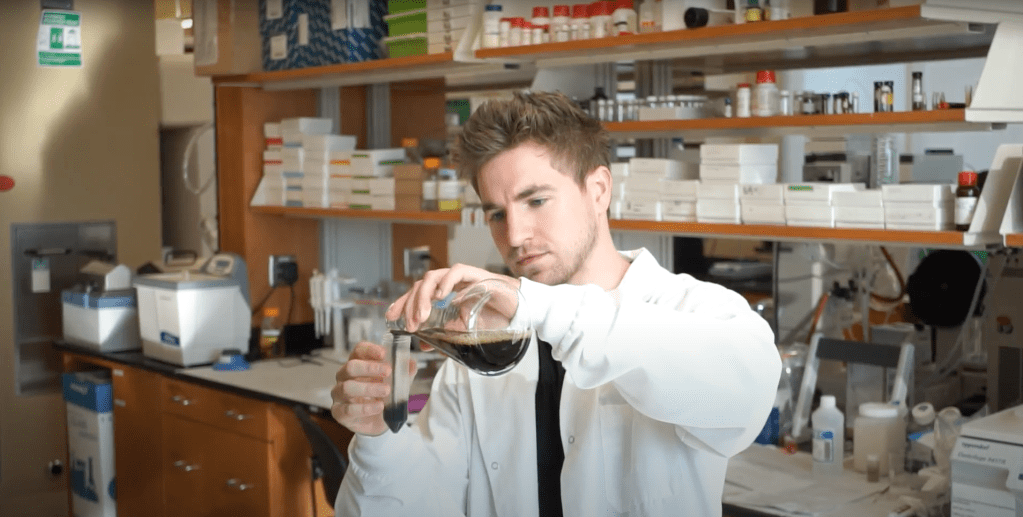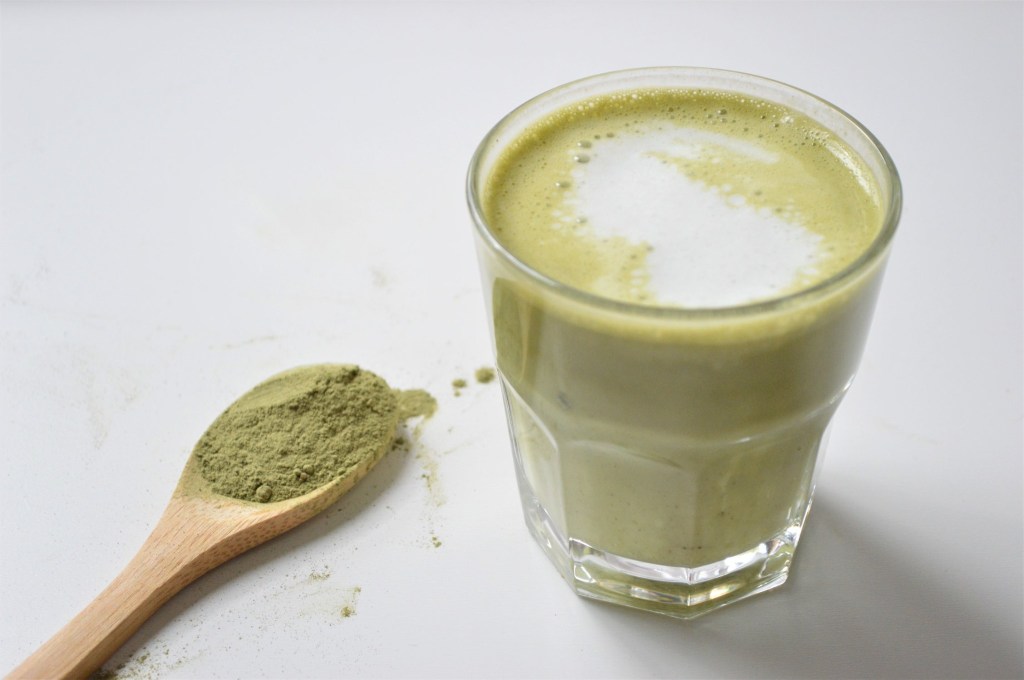Victoria-based start-up The Leaf Protein Co. recently raised $850,000 in pre-Seed funding for its green leaf-based protein extraction technology.
Launched in 2020 by CEO Fern Ho, the company later added food scientist Connor Balfany as a co-founder.
In the first part of our two-part interview, the two spoke to Future Alternative in depth about the journey to their funding milestone and what sets leaf-based proteins apart from other plant-based alternatives.


Fern Ho & Conor Balfany.
How did you both come together to form The Leaf Protein Co.?
Fern: In 2020, I was first introduced to leaf protein as being the most abundant protein on earth. Back then, I had just realised that I had food intolerances to things like gluten and dairy. So I was starting to become much more cognizant of the ingredients that were going into our packaged foods and looking to understand how the provenance of an ingredient plays a role in not just the functionality of the finished goods, but also the nutrition.
When I learned about leaf protein being so abundant as well as both sustainable and very nutritious, it made me wonder why it hadn’t been commercialised before. That opened up the start of my journey for the Leaf Protein Co., and I registered the company in September 2020.
My background is not in the natural sciences. I have a background in electrical engineering as well as product marketing and product management, so I could handle all the go to market stuff. But I was looking for a co-founder that does have that natural sciences background, someone that would be able to help develop the technology that could make it real. Connor reached out through the website in early 2021.
Connor: I did my undergraduate in biology including a program exploring plant metabolic pathways, what they create, and how they relate to human health. In 2017 I started to develop a protocol to extract protein from plants. It was part of this large cohort competition. And the research that I had started formulating actually took first place and earned me a full ride scholarship to pursue this at a doctoral level here at the university, in this exact same lab.
I was always keenly interested in the science, but then interrelated that into the food systems, food security and sustainable agriculture. There was just so much impact that I saw this research could have. It didn’t have to stay at the lab bench, but was readily applicable in the real world and real problems, and moved at a much faster pace than maybe some other scientific industries as well.
I started with a Google search of leaf protein companies and of course, what comes up on search engine optimization but the leaf protein company that Fern had started. There was some wild serendipity of Fern looking at some plants that were very understudied that I had already extracted protein from. She had already seen the commercial value.
From the get go, it was this wonderful synergy of two halves of the same coin. The initial conversation to the agreeing to be co-founders was really quick, but it just made so much sense. And here we are, nearly four years later, sitting down in the same lab in Australia, but with a lot more to show for it now.
You recently announced a milestone raise of 850K. What was your fundraising process?
F: With most startups, you go through those accelerator programs in the early days – they help with the framework of how to build out your roadmap and how to look at commercialization of your technology in your IP. We have been in a number of key accelerator programs. Obviously, with me being based here in Australia, we started off with Rocket Seeder and then Sprout X, and then we went into the Big idea Ventures accelerator program in New York. We were part of a cohort of five in New York. And after that, we also got quite a bit of coverage through the media. And that’s sort of the snowball effect, one thing leads to another.
Then we got invited to a big event in Singapore, the Asia Pacific Agri Food Innovation Summit, where we had our first major showcase on stage with a chef who showed how our ingredients could be used. We’ve been in a whole lot of different startup competitions as well as the entrepreneurship World Cup competition in Riyadh early last year. Lots of exposure globally has helped connect us with a lot of the different interested parties, both overseas and here [in Australia] as well.
C: One thing that’s cool about this technology or this platform in particular is that it’s so wide reaching. You can look at it from the growing perspective where we work with sustainable resources or crop waste, and all of a sudden that’s a sector of investment and interest. You can also look at it from novel ingredient usage or the plant based movement and those new products coming out, and that’s a sector of interest. You can look at it from novel processing and creating proteins which can be used for skin care or pharmaceuticals, and that’s a sector. So the traction was quick and plentiful – sometimes even a little bit much.
Is the idea of using leaves as a protein source a new idea, or is this something that’s been happening throughout human history?
C: It’s certainly nothing novel. I think the novel aspect is coming from market shifts and people’s desire for something new. It hasn’t been so heavily commodified as soy in the pee industry, but people have been eating leaves for nutrition for millennia.
The concept of actually extracting protein that’s in the leaf is also not an overly new idea. Back in the 1800’s was when the first musings of this ability to extract protein and make it into a very nutritionally packed, albeit bitter and disgusting product, were first brought to light. And over time, it was continually explored, sometimes for animal feed, sometimes for making use of waste crops.
But the sphere that we find ourselves now is a very unique market where people are very aware of the food products they eat and also the pipelines that they come from, whether it’s mono cropping, sustainability, or just locally sourcing your products.
Now we have the ability to present these new products into the market and have them be received in a way that they couldn’t have happened in the early 1900’s or the 1950’s, when that push to commercialise started.
A lot also ties into the story of what you can bring with leaf protein. As a quick little science lesson: if something’s green and photosynthesizing, it needs the proteins to accomplish that. Those are the proteins that we are extracting. There’s so many green photosynthesizing species out there – it’s what makes [leaf protein] the most abundant protein source on earth. And as that is such a diverse and wide set, you can be incredibly novel on what you choose as your green photosynthetic source.
It’s been really cool to be able to tie that into conversations of making use of products that already exist but haven’t been fully utilised. Things like carrot tops or sweet potato vines, banana leaves, or all of these things that are a product of what’s already being produced and commodified, but adding value to something that has been previously seen as a waste stream.
That’s part of the platform technology that we really want to tie in together with the leaf protein – whether it’s sustainable crops or waste streams – making use of the world’s most abundant source of protein in this new light, where consumers are more conscientious and plugged in with where their food is coming from. It’s the perfect storm for this concept to really start getting traction and getting the market attention that is has deserved for a long time.

What is the sourcing process for your leaves?
C: There’s a lot of leafy material out there and that can exist in a lot of different ways. We’re all familiar with fall colours, and there’s a protein shift when that occurs as well. What we’re seeing is an influence of cellular biochemistry internally.
The long story is that every species is unique and requires its own due diligence and understanding of what it means to extract that protein. Then comes the industrial pressure of making sure that that [protein] can be used and brought to scale.
For the leaf protein we want to work with existing streams. We don’t want to become really adept farmers for ourselves because we know there’s people already out there that have gotten really good at growing and making green products. We’ve set ourselves up to collaborate with those people and plug into existing production streams. Sometimes that is conventional croppage – foliage like alfalfa, barley, oats – and widespread leafy crops that are already grown for silage or for animal feed.
Now, we’re giving it a new use in the human market and doing it in a way that’s more sustainable. They’re getting more cuttings, it uses less water, and it’s more protein per hectare than other traditional plant proteins. We’re taking an already established production method for green crops, but applying a new downstream processing method, which makes it more efficient to grow.
Then there’s the conversations with people that are growing crops for other reasons. Broccoli, for instance. They harvest off the heads, the florets, but all of that leaf material still either stays on the field or is separated in other ways.
That’s essentially where we are at in the business right now. We’ve been able to validate this at lab scale with the tiny test tubes and everything for the past three years, have had great results, and have now been able to take that to a much larger scale to explore that in a commercial setting.
How do you overcome the smell and taste issue you mentioned?
C: The leaf is a very complex cellular piece of machinery, even when you compare it to pulses and beans and those conventional crops. Pulses, for instance, are meant to sequester nutrients for future seed germination. So all they really need to be is fat and protein put together in a little nutritional ball for seeds. A leaf, on the other hand, is doing some very complex cellular processes, and with that complexity comes additional molecules that are eating in flavour and taste and can sometimes adulterate your product.
What we found is that you can actually use those for specific markets as well. In the extraction process, rather than saying the green part or the bitter tasting part is a waste material, we found that its high antioxidant capacity and other nutraceutical benefits can actually be applied to a different market subset.
To do a little bit of a product demonstration, as we kind of extract the leaf protein, we have common green proteins that can be applied to things where maybe flavour isn’t an issue. Greens powders are really blowing up on the market right now because people want to embody that health, taste, and all the benefits that accompany a healthy product. But in that process, we fractionate off and clean up the protein, then get something a little bit more beige and white.
We’re actually creating a multiple product stream with our process, and everything goes to use. Our final products are flavourless and odourless and have high functionality, and can be applied to things where people don’t want the flavour or the odour or the associated attributes.
F: I’m not the scientist here, but the RubisCO protein is one of the key protein enzymes that we are isolating and extracting naturally. That protein is actually a neutral coloured and tasting protein, so it’s very unique. And Connor’s development of the extraction process has allowed us to isolate that, so that if you do want something that is the most pure form, you end up with an isolate that’s actually really easy to formulate in anything because you don’t have to worry about colour or taste.

What has the consumer feedback been like?
F: We were invited earlier this year to do another showcase at the Evoke AG conference in Australia, Australia’s annual agri-food conference. On stage, we had Connor do a cooking demonstration of how to incorporate not just the white isolate, but actually our complete protein. This is the protein that also has the green fraction protein in it as well. Connor cooked up a pasta that was made using our green leaf protein ingredient on stage and served that up.
We also had our green complete protein used in a sponge cake. Many are familiar with matcha, the Japanese green tea powder that’s been increasingly used in desserts, but it doesn’t have the same protein content that our ingredient does. A lot of people that came by to taste it had lots of great positive responses to it. People are wanting to add more green products into their life, and leaf protein is one way to do it where it does taste nice as well.
—-
Please see Part II of the interview here.
To stay up-to-date on the latest industry headlines, sign up to Future Alternative’s enewsletter.
Posted on:


